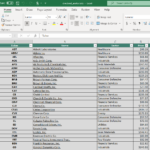The key highlight of the week was Nifty’s breakout above the symmetrical triangle pattern it had been coiling within for several months. This breakout came with a close near the upper Bollinger Band and has pulled the support levels significantly higher to the 25,300–25,400 zone. However, the rally has come on the back of weak market breadth, raising questions about the participation and sustainability of the move.
Additionally, the sharp spike in India VIX further injects an element of caution as it reflects rising hedging activity. While the price structure has turned bullish post- breakout, the lack of strong internals and surge in volatility suggest the rally could be vulnerable if not supported by broader market strength.
Given the technical breakout, the markets may look to start the coming week on a stable to positive note. However, traders must remain mindful of the week being a shortened one. Tuesday’s session will be limited to an hour-long Mahurat Trading in the evening, and Wednesday is a market holiday. For the week ahead, immediate resistance is expected around the 25,850 and 26,000 levels. Supports have now shifted higher and rest at 25,520 and 25,400 zones following the breakout.
The weekly RSI stands at 60.88. It has formed a 14-period high, but remains neutral and does not show any divergence against the price. The MACD on the weekly chart is bullish as it trades above its signal line. A bullish candle has formed near the breakout point, confirming the move out of the symmetrical triangle and validating the strength of the breakout for now.
From a pattern analysis standpoint, Nifty has resolved a multi-month symmetrical triangle to the upside. This breakout, occurring above a strong confluence zone, lends strength to the medium-term setup. The Index is trading well above all its key moving averages – the 20-week, 50-week, 100-week, and 200-week – which further underpins the bullish structure. The breakout also opens up the possibility of a trending move higher, provided the broader participation improves.In the coming week, a cautiously optimistic approach is advised. While the technical breakout gives the bulls an edge, the rising volatility and poor market breadth call for a disciplined strategy. It is essential to protect gains at higher levels while selectively participating in strength. Traders should avoid aggressive fresh buying and instead adopt a stock-specific approach with a strong focus on risk management. The method to approach the week: stay moderately bullish but tactically cautious.In our look at Relative Rotation Graphs®, we compared various sectors against the CNX500 (NIFTY 500 Index), representing over 95% of the free-float market cap of all the listed stocks.
 ETMarkets.com
ETMarkets.com ETMarkets.com
ETMarkets.comRelative Rotation Graphs (RRG) show that the Nifty Pharma, Metal, and Auto Indices maintain the leadership. These groups are inside the leading quadrant and are expected to relatively outperform the broader markets.
The Nifty Midcap 100 Index remains the only Index inside the weakening quadrant. It is also seen as mildly improving its relative momentum. Individual stock-specific performance may be seen, but overall relative performance of the mid-cap space may continue to remain tepid.
The Nifty Consumption, Commodities, Services Sector, and Media Indices continue to languish inside the lagging quadrant. They may continue to underperform the broader markets relatively. However, other groups, such as Realty, PSE, Nifty Bank, Infrastructure, Energy, and Financial Services, are also inside the lagging quadrant, butthey are seen improving significantly on their relative momentum.
The Nifty FMCG Index is inside the improving quadrant, but it is rapidly slowing down in its momentum. The IT and Pharma Indices are also inside this quadrant and are expected to continue improving their relative performance against the broader markets.
Important Note: RRGTM charts show the relative strength and momentum of a group of stocks. In the above Chart, they show relative performance against NIFTY500 Index (Broader Markets) and should not be used directly as buy or sell signals.
























